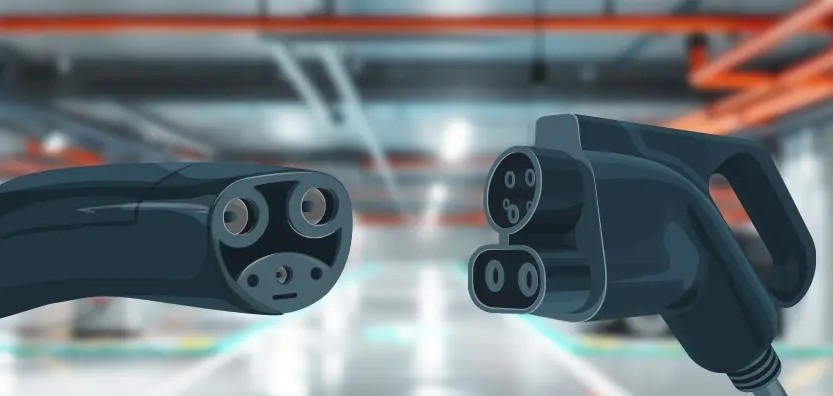NACS vs. J1772: Comparing the Leading EV Charging Standards in North America
As a professional EV chargers manufacturer in China, Topper Company delivers dependable electric vehicle charging stations and comprehensive solutions.
As electric vehicle (EV) adoption continues to rise, the demand for efficient, accessible, and reliable charging infrastructure has never been more critical. In North America, two key charging connector standards dominate the EV landscape: the SAE J1772 connector and Tesla's North American Charging Standard (NACS).
While both connectors aim to simplify the EV charging experience, they differ in design, functionality, and performance. In this article, we’ll explore the key differences between J1772 and NACS, their respective pros and cons, and how these differences impact EV owners.
What is the J1772 Charging Standard?
The SAE J1772 connector, also known simply as J1772, is the industry-standard plug for non-Tesla EVs in North America. Developed by the Society of Automotive Engineers (SAE), it is primarily used for Level 1 (120V) and Level 2 (240V) AC charging. Automakers such as Chevrolet, Nissan, BMW, and Ford use this standard on their EV models.
It’s the most common connector found in public charging networks such as ChargePoint, EVgo, and Blink, as well as home charging stations.
Advantages of J1772
- Widespread Compatibility: Works with almost all non-Tesla EVs in North America.
- Safety Features: Includes ground fault detection, short-circuit protection, and automatic locking.
- Ease of Use: Simple, ergonomic design for convenient daily charging.
- Established Infrastructure: Found in nearly all public and home charging setups.
- Proven Reliability: A longstanding, durable standard with wide adoption.
Disadvantages of J1772
- Limited Charging Speed: Supports AC charging only, typically maxing out at 19.2 kW.
- No DC Fast Charging: Requires a separate CCS (Combined Charging System) port for fast charging.
- Aging Standard: Faces limitations as newer, faster standards emerge.
- Physical Wear Concerns: Locking mechanisms can wear out over time.
What is the North American Charging Standard (NACS)?
The NACS, originally developed by Tesla, integrates both AC and DC fast charging into a single compact connector. Formerly exclusive to Tesla vehicles, the NACS was opened to other automakers and charging networks in November 2022, accelerating its adoption.
By June 2023, SAE announced efforts to standardize NACS, making it a legitimate challenger to the existing J1772 + CCS combo.
Advantages of NACS
- Dual Charging Capability: Supports both AC and DC fast charging up to 250 kW.
- Access to Supercharger Network: Enables use of Tesla’s extensive and highly reliable Supercharger stations.
- Compact & Sleek Design: Smaller and lighter than J1772, easier to plug in and remove.
- Plug-and-Charge Support: Authenticates and charges automatically, without apps or RFID cards.
- Future-Proof Standard: Gaining wide industry support from automakers like Ford, GM, Rivian, and Volvo.
Disadvantages of NACS
- Limited Public Availability (for now): Primarily found at Tesla Superchargers and select new stations.
- Not the Fastest: While fast, it doesn't yet reach the 350 kW peak speeds of some CCS chargers.
- Cost Considerations: Supercharger rates may be higher for non-Tesla users.
Which Charging Standard Is Right for You?
Choosing between J1772 and NACS largely depends on your EV model and your typical driving habits:
- Choose J1772 if you own a non-Tesla EV and rely primarily on Level 2 charging at home or public stations.
- Choose NACS if you're a Tesla owner or plan to purchase a vehicle from a manufacturer adopting NACS, and you value faster charging speeds and Supercharger access.
The Future of EV Charging in North America
As more automakers adopt NACS and retrofit their vehicles or release new models with NACS ports, we may see a convergence toward this unified, compact, and fast charging standard. Meanwhile, J1772 remains the backbone of today’s public and home charging ecosystem for non-Tesla EVs.
In the near future, dual-standard stations that support both connectors (and adapters) will likely ease the transition and ensure broad compatibility during this critical growth phase of EV infrastructure. Know more about Google SEO Directory





Comments